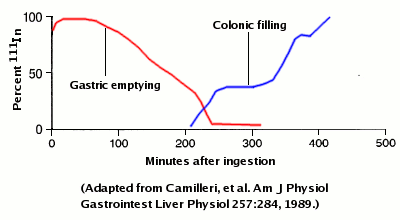"When does the keen knife edge of human ambition dull into a mere quest for survival? Perhaps it relates somehow to those "lives of quiet desperation" that Thoreau was always harping about as he often expressed opinions on the futility of the agricultural lifestyle. I can relate, perfectly."
--Joe Hutto, Touching the Wild
General Thoughts
Agriculture is hard, necessary, and always just-in-time. Whatever you may think about agricultural policy exceptionalism (i.e. exemption from the Clean Water Act (
this is changing), tariff protections and
subsidies), the truth is that farming is hard and food is a miracle.
While I support organic agriculture and believe we must find holistic solutions to meet our nutritional needs, I don't begrudge any farmer who chooses to use every tool available... whether that means artificially-bred chickens that grow
4x faster than heirloom breeds, or GMO crops (
still no scientifically-documented health risks), to the use of chemical fertilizers, herbicides, pesticides, and fungicides.
I have some personal experience with organic and
Permaculture farming; enough to know I'm lucky that my ability to get food on the table isn't dependent on my success in the garden. Whether its trying to keep crops alive in 110 degree heat of a Tucson June, or trying to defend my pumpkins this summer in Albuquerque from squash bugs, I haven't always been successful!
It seems amazing that it would take less time, energy, and money to produce chemical pesticides in a factory somewhere, ship cross-country, and spray on my pumpkins -- then it is for my wife and me to spend an hour each and every morning picking bugs off our plants. In the Big Argument whether organic food can feed the world, its important to weigh the individual microeconomic decisions of farmers; how much time they're willing to devote to organic agriculture. In Albuquerque, I would argue that almost no one has the time to grow organic pumpkins and squash: either you don't grow them, or get ready to rain down chemical death on your adversaries. (I've also heard that planting very late, i.e. after monsoons begin in July, may mean missing peak squash bug season.)
Gardening is slow knowledge that takes time to build. Next year I think I'll try planting late -- but I'm also going to keep a chemical arsenal ready. Just as I try to eat healthy and avoid antibiotics (in soap, etc), I won't refuse antibiotics if I get really sick or my pumpkins get infested with squash bugs again. Every tool should be on the table. This is one issue some organic consumers run into when they shop at local farmers markets -- many local farmers try to grow organic, but don't certify as such because 1) certification is expensive, and 2) they don't want to give up tools they might need if their crops are sick. So supporting local agriculture means coming to terms with a world that isn't black-and-white, where there is a place for local knowledge, building the soil, complementary planting AND chemical pesticides.
Post-Mortem on our Garden
Our corn was lackluster this year -- either because we bought the local variety, or maybe a lack of fertilizer and poor soil quality. We let morning glories climb over everything because they have pretty flowers , but they really are pernicious weeds w/out many redeeming qualities.
Three Sisters Agriculture seems like bullshit. Pests hide in dense vegetation, and we've found that well-spaced plants are healthier and easier to maintain with fewer insects and mold problems.
Native Wildflower Mix + Straw = Tons of Weeds
Native wildflowers grew slowly, if at all, and were easily overwhelmed by look-alike weeds that grew quite well on little precipitation and bad soils. The fact is that weeds grow amazingly well in New Mexico (as any botanist will observe) -- in a land where not much else can survive.
Tried to grow (again) Chia seeds but the tall mint-like plants never flower. We also tried growing quinoa, which is supposed to grow robustly in arid regions -- it is in the same family as some of the most successful weeds in New Mexico, so it might have a chance...!


















